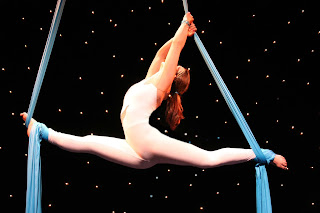Crusade

Tuesday, 6 August 2013
Are we really dancing?
Wednesday, 31 July 2013
Choreographers and the styles
 We live in a
world where media is our father source or say the main source. We depend on media
for every pin to pen and mainly for entertainment.
We live in a
world where media is our father source or say the main source. We depend on media
for every pin to pen and mainly for entertainment.Saturday, 27 July 2013
Tit for tat?!
So far my blog posts discussed how western dances have obscured the Indian dances to a major extend. The derivation of western dances from Indian dancing has led to a great invention and growth of western dancing culture leading to gradual homicidal of Indian dancing culture. The sad part here is that rather than preserving the culture, lethal has been supported. It isn’t new to know that the dance shows or any other reality show that we see on TV are rather copy or a replica of the western shows. Though there is nothing wrong in it as copying ideas isn’t an offence. But copying cultures? Well this is just like a game where two cultures are playing and answering tooth for a tooth. I switch on TV on a Saturday and what I see is dance India dance or a similar dance show with an alias name. But what I see is the contemporary or the aerials that I saw some months back in a so you think you can dance episode. Well i know it is an attempt to copy a bigger idea but why copy dance that was originally derived from Indian dancing grounds? Interestingly, I find young Indian kids dancing to brilliant hip hops that overshadowed tapori dance on an Indian dancing competition where they hardly know what tapori is! Indian dancing culture is so wide and spread but still I find kids tied to aerial ropes or imitate contemporary dances. It’s a dance show being telecasted on Indian television so why not Indian dances?
Through this blog I attempt to discuss some Indian dances which hardly people know. This obviously isn’t going to change what is being telecasted but an initiative never goes waste. So putting a glance in the western part of India I find some dances that i wished ever would have been familiar to me.
Tippani
I simply love India because I find even work here is a form of dance. Women especially in India are considered as humans that can do nothing apart from doing household chores. But then how about turning this work into dance? Well this is what tippani is. They do this work in the form of a dance, and sing in accompaniment. The tippani consists of a wooden block with a long wooden handle. Sometimes small bells, or ghungroos, are tied to the handle. The dance begins slowly, with the singing and beating of the ground done in the same rhythm. As the pace quickens, the dancers alternately pound the floor and strike the handles of the mallets together, and then introduce body movements, usually bending and raising themselves. Towards the end of the dance, they stand in rows and strike the floor very rapidly.
Goaf
This dance is a derivative of the Dandiya Raas. Colored ribbons or ropes are suspended from the top of a pole, or other support, and the dancers below hold an end of the rope in on hand, and a short stick in the other. The dancer’s movements are choreographed so that the ropes are woven and unwoven to make various patterns. The dancers also strike the sticks as they dance.
Hudo
Tap dance sounds very familiar since it’s seen in every dance show that is being telecasted. But clap dance? Well I hardly remember if I have seen such a dance. This is another dance form of west India that resides somewhere in the villages of Gujarat. Where men and women clap and create a beautiful rhythm and dance on the beats created by the clap. I wish if I get to see clap dance more than the tap dance.
It would have been so good if I could refresh my eyes with some hudo or the goaf dance. When there is so much within then why copy. An irony here is that what is already copied is being re-copied. Also as I said before, this blog isn’t going to change the truth but some of you would know that there is something more than jazz and hip hop. Some dance forms of India are still original. And efforts to bring out lost ethnicity would never be misspended.
Tuesday, 16 July 2013
Hip hop - A westernized form of ‘tapori’ dance

